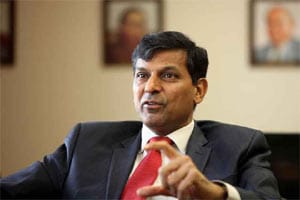Notwithstanding the recent sharp fall in retail inflation, reining in the price rise in the economy is still among the “work in progress” objectives of the Reserve Bank of India (RBI), governor Raghuram Rajan said on Thursday. The central bank’s annual report for 2014-15 noted inflation was still at the “upper end” of the RBI’s forecast. The RBI bank stuck to its forecast of a 7.6% growth in domestic product growth for 2015-16, saying growth remained below par.
However, the RBI warned the government’s banking reforms would need to be swiftly implemented, adding that delays may do more harm than benefit the banking sector.
“The current stress in the banking system suggests that the real economy will not wait for the banking system, and a slow pace of reform could lead to greater rather than lower risk residing in the banking system,” the report said.
The central bank meets on September 29 to review monetary policy after the US Federal Reserve takes a call on whether or not to raise interest rates in mid-September. With wholesale price inflation in the negative, the Consumer Price Index ruling at sub-4% and growth faltering, there has been a clamour for a cut in interest rates. So far in 2015, the RBI has reduced its key repo rate by 75 basis points to 7.25% but has left it on hold in the previous two bi-monthly policy reviews citing inflationary pressures. The central bank said that though inflation so far has been in line with its projections, it warranted close monitoring. Retail inflation fell sharply to 3.78% in July, largely due to a base effect and a fall in food inflation. The RBI expects inflation to inch up from August onwards as the base effect wears off.
“First, economic growth is still below levels that the country is capable of. Second, inflation projections of January 2016 (as of early August 2015) are still at the upper limits of the RBI’s inflation objective. Third, the willingness of banks to cut base rates — whereby they forgo income on existing borrowers in order to attract more new business — is muted,” Rajan wrote in his overview in the report.
The central bank reiterated that transmission of earlier rate cuts into bank base rates is not complete and that the central bank would wait for the reductions to be passed on by banks. “The efficacy of the monetary policy transmission mechanism needs to improve since the pass through of recent cuts in policy rate to the bank lending rate has been partial, reflecting the constraints in transmission under the existing base rate system,” the RBI report said.
Based on the PJ Nayak committee report, the government has announced various measures that would strengthen the governance and management of banks and also announced that it would infuse Rs 70,000 crore capital into public sector banks to help them manage bad loans and grow their balance sheets. It also said it would set up a bank boards bureau to oversee appointments of bankers and eventually a bank holding company to have an arm’s length approach in managing public sector banks.
The RBI also said the banking sector will witness substantial change and intensified competition owing to two new universal banks and 11 payments bank entrants. The central bank would soon choose applicants for small bank licences and it aims to make the bank licence process “on tap”, the RBI said. On the existing issues of asset quality and governance, the RBI stressed that regulatory forbearance is harmful and that it would overhaul its supervision of banks by continuously rationalising regulations and by also detecting and penalising non-compliance by banks.
The RBI listed various measures it has taken so far to help banks deal with stressed assets and indicated that it would monitor the effectiveness of its schemes such as the 5/25 scheme and strategic debt restructuring.



